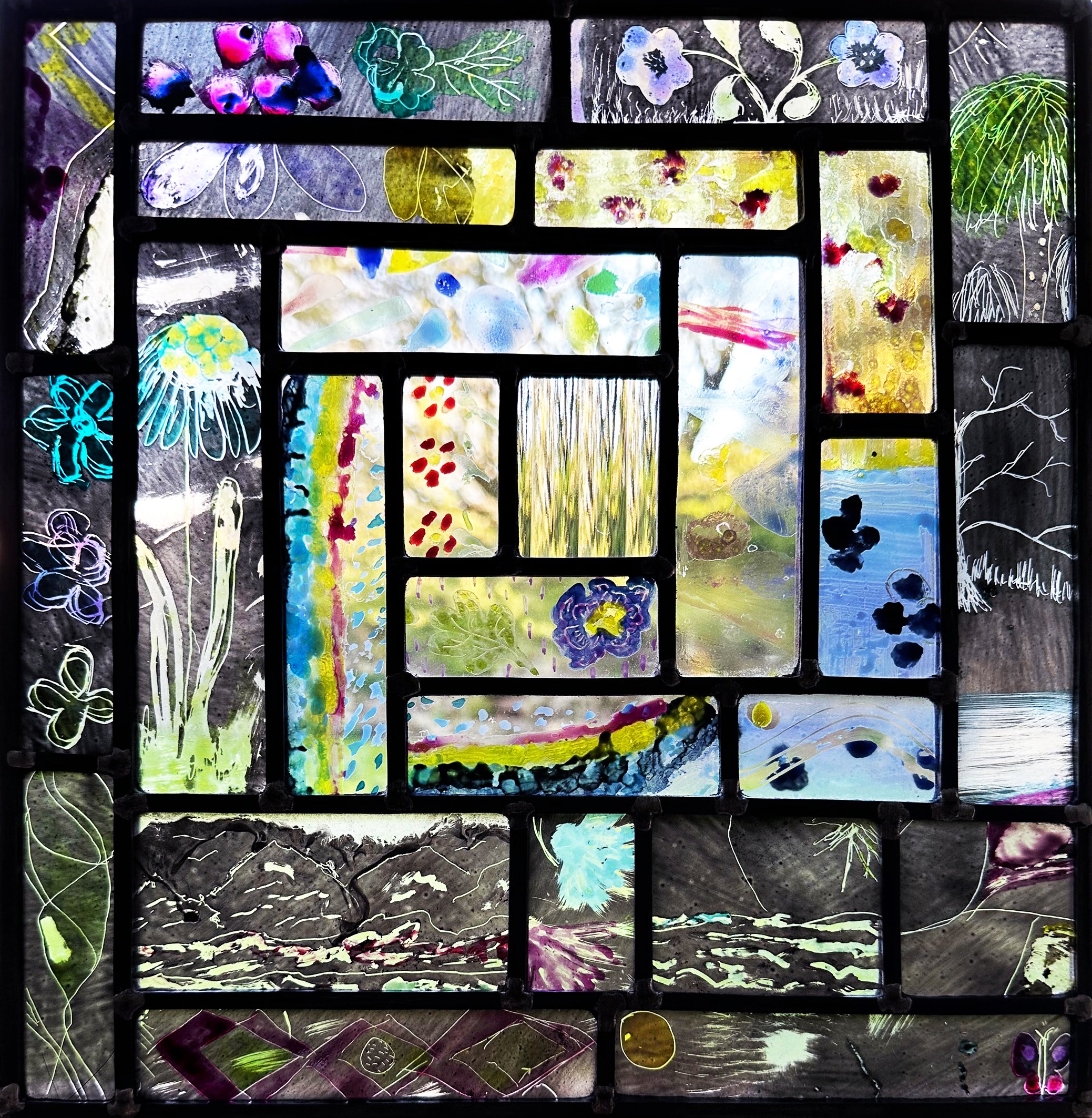Although it is true that you can’t make a silk purse out of a sow’s ear, I really don’t believe in the concept that this proverb expresses especially when applied to the making of stained glass. I’ve always used old scraps of glass - scratched, industrial, too thick or too thin - to paint on. I use old jars of powdered enamel that people have given me and ancient pots of iron oxide that I don’t spend hours grinding down (as I was advised when studying). I use these same materials when I run glass workshops, most recently for Arts Together in five different venues in Wiltshire, previously described on my blog here and here. So I’m not being critical of other people’s work when I describe the process of making a stained glass panel out of their painted scraps of glass in terms of the silk purse and the sow’s ear, but I feel as if this is what I have done with the discarded bits from the workshop sessions (above).
This small panel is a nice reminder for me of the project and the people who made the pieces, which were mostly samples to try out the painting techniques. It is also a reverse of the participants panels, which go from a dark centre to a bright and light border, as it spirals from a dark edge to a clear centre. I’ve laid out the group members’ finished panels below, all 71 of them, categorised mostly by subject matter.





























